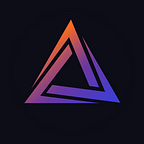Ethereum | A look into its ecosystem and dApps
There are a lot of different blockchains, but one, in particular, is drawing the attention of the world’s largest platforms, and most recognizable people and brands — Ethereum.
On Ethereum, the Ukrainian Government raised over $50m to support their wartime efforts.
Celebrities like Jimmy Fallon & Paris Hilton, Post Malone, and Reese Witherspoon have joined or partnered with Ethereum NFT communities, while renowned director Ridley Scott is producing a movie about Ethereum. Meanwhile, major brands like Nike, Adidas, Gucci and TIME are working on their own projects, and platforms like Instagram, TikTok, Twitter and Shopify are actively integrating with Ethereum.
So why are they choosing Ethereum?
What is Ethereum?
Ethereum is a general-purpose blockchain which can be paired with user-friendly interfaces to create decentralized applications (dApps). These dApps can be programmed to do anything! While this isn’t unique to Ethereum, it has benefited from having a more established user base compared to other blockchains. More users bring more attention and innovation, which in turn attracts even more users.
One downside is that to use Ethereum and its dApps, you need to pay transaction fees called gas, using Ether (ETH), the native digital currency. Currently, this can make it more expensive to use compared to traditional software applications and other blockchains, especially since fees increase when there’s more activity.
The Gateway to Ethereum
Today, you’d be used to creating new accounts for each website or application you use — whether it’s for online banking, shopping or social media. On blockchains like Ethereum, it’s much simpler because with just one account, you can use any dApp.
The easiest way to set up and manage your account is by using a self-custodial wallet. These wallets come in many forms — from mobile apps (Rainbow, Argent), to browser extensions (MetaMask) and even physical hardware (Ledger, Trezor).
Ethereum’s Current dApps
Since we can’t cover all the dApps that exist, we’ll focus on how Ethereum dApps enable:
- access to decentralized financial services
- improved fundraising
- ownership of digital assets
Access to decentralized financial services
One of the use cases of blockchains are financial applications, broadly referred to as decentralized finance (DeFi). A majority of DeFi activity is currently happening on Ethereum.
DeFi has started to automate many things that you’d typically have to do with your bank. For example, you can earn interest on savings and borrow money through AAVE, Compound or Lido, while investing in index funds with IndexCoop. And with these dApps, you also have the option of using stablecoins like USDC, USDT and Dai. (Read our article on Stablecoins to find out more). Where DeFi shines over traditional financial institutions is that it’s global, permissionless, always-on and totally transparent.
No more waiting for opening hours or paying high international fees. And even those unbanked can participate.
Beyond what you already do, the flexibility of dApps has enabled other unique possibilities like:
- trading any pair of cryptocurrencies on decentralized exchanges like UniSwap or Atlas DEX
- automatically optimizing the interest you earn on savings through Yearn
- investing in the outcome of real-life events through prediction markets like Polymarket
Improved fundraising
The benefits of DeFi also extend into the realm of fundraising.
One example is Endaoment, a dApp which lets anyone raise funds for, or donate to specific non-profits or causes. By raising funds on Ethereum, non-profits gain access to a global pool of donors, allowing for greater impact. Meanwhile, the fast and transparent movement of funds helps to ensure capital is deployed quickly and appropriately.
Similarly, you can support:
- the development of valuable public goods which are typically under-funded through Gitcoin Grants; or
- any projects you care about on Mirror
Ownership of digital assets
On Ethereum, it’s also possible to collect and own scarce, digital assets represented as non-fungible tokens (NFTs).
For example, POAP can turn your community participation into a digital memento, while dApps like ArtBlocks or Audius let you collect artworks and music. When combined with the flexibility of smart contracts, NFTs can enable possibilities like:
- giving collectors access to gated perks, such as content and events
- being able to freely buy & sell digital assets on marketplaces like OpenSea or LooksRare
- automatically sending creators ongoing royalties from secondary sales of their works
The Future of Ethereum’s dApps
Despite the wide range of dApps available today, Ethereum doesn’t have the speed and scale needed for mainstream adoption yet. However, it’s worth remembering that it only launched in 2015. There are many developments in the works that’ll increase speed, improve scalability and lower transaction costs. One major milestone is The Merge, which is set to be completed in September 2022.
As Ethereum progresses further along its roadmap, new use cases will be enabled. For example, we may start having more fun, personalized and unique online shopping experiences through tokengated commerce. Maybe we’ll stop creating siloed profiles on every platform we use because we can sign in with our wallets instead. Or perhaps we’ll make the world better, by leveraging the power of fundraising on Ethereum to fund other unmet needs, like Vibe Bio for underfunded drug development of rare diseases.
The possibilities are endless because on programmable blockchains like Ethereum, every new idea or dApp is like a digital LEGO block which can be combined and re-used in any way.
Not a part of our community yet? It’s not too late to join.
💥 | Check out our website: Atlas DEX
